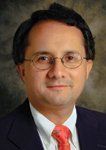Editorial: Snatching the ob/gyn physician-scientist from the verge of extinction
The percentage of physicians engaged in research in the United States dropped from 4.6% in 1985 to 1.8% in 2003.

As early as the mid-1980s, the academic medical community and the National Institutes of Health (NIH) recognized the serious deficit in innovative, original ob/gyn research and in the number of physician-scientists in academic ob/gyn departments. A 1992 Institute of Medicine (IOM) report noted the very small proportion of total NIH resources going to ob/gyn departments and observed that we were receiving only 7.5% of funding available from the National Institute of Child Health and Human Development (NICHD).1 The study's conclusion: Ob/gyns were less successful at competing for NIH funding than other academic departments and were submitting fewer applications. The key recommendation was that the NICHD should tailor research career development awards to ob/gyns to create a cadre of physician-scientists capable of competing for funding.
To the NICHD's credit, it implemented a series of sweeping measures to ensure that more ob/gyn physician-scientists would enter the pipeline. The first step was long-term support for the existing Reproductive Scientist Development Program (RSDP), which provides up to four annual fellowships (K-12 awards) for budding reproductive scientists to work for 2 to 3 years in basic research labs. In 1998, the NICHD began its Women's Reproductive Health Research (WRHR) Career Development Centers Program (another K-12 award series). It funds basic, translational, and clinical research for three to four aspiring physician-scientists in each of 20 academic departments. Next, it increased the availability and visibility of its individual K-series training awards, including basic science-focused K-08 awards and clinical research-oriented K-23 awards. In the fall of 2000, the NICHD introduced its Building Interdisciplinary Research Careers in Women's Health (BIRCWH) program, which pairs junior researchers with senior investigators and is open to ob/gyn and non-ob/gyn departments.
Thanks to these efforts, more ob/gyns have entered the physician-scientist pipeline. However, attracting additional candidates and retaining the current crop is becoming far more difficult. Overall, paylines at the NIH are plummeting and NICHD paylines have dropped from above the 20th to around the 12th percentile. Thus, just as young researchers are ready to craft their first grants, research support is drying up. By next year, fewer than 10% of all grant applications to the NICHD-which provides the bulk of the money for pediatric and ob/gyn research-may be funded.
Our two primary sources of physician-scientists are the MD/PhD population and so-called "late bloomers."2 MD/PhDs who choose a research career in college account for 2.5% of medical school graduates and garner about 30% of NIH grants to physicians. The "late bloomers," who settle on research during or after residency or fellowship, account for 6% of medical school graduates and garner 70% of grants to physicians. Ob/gyn departments are not particularly successful in recruiting MD/PhDs because virtually none of them have PhD programs in reproductive sciences. And very few have enough NIH-funded basic and translational researchers on staff to drum up support for postdoctoral training.
